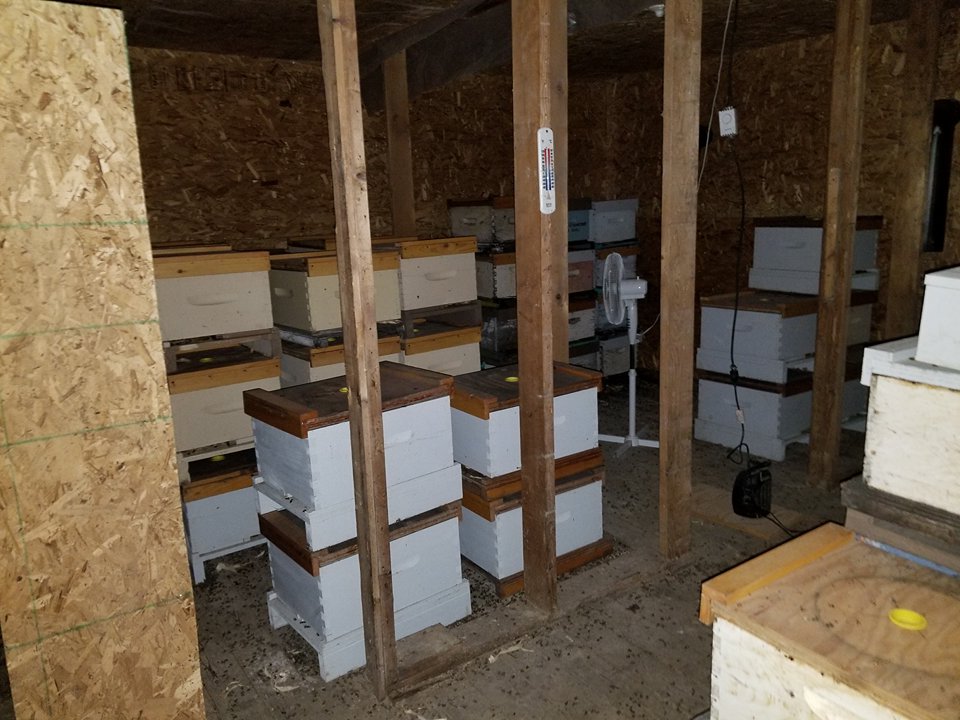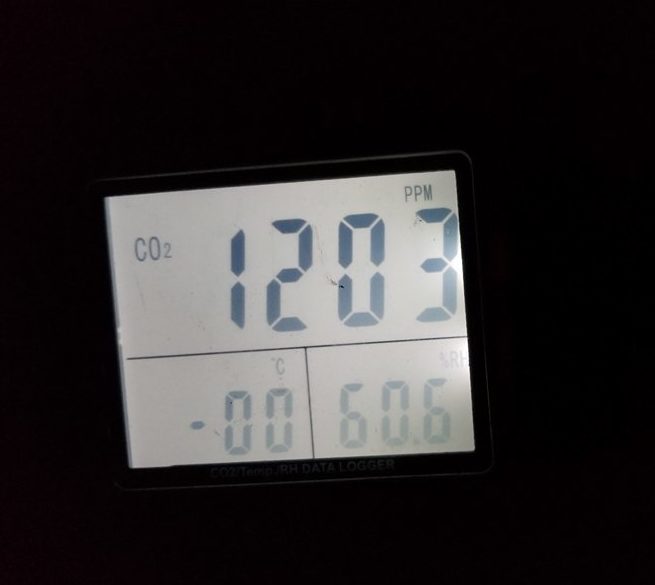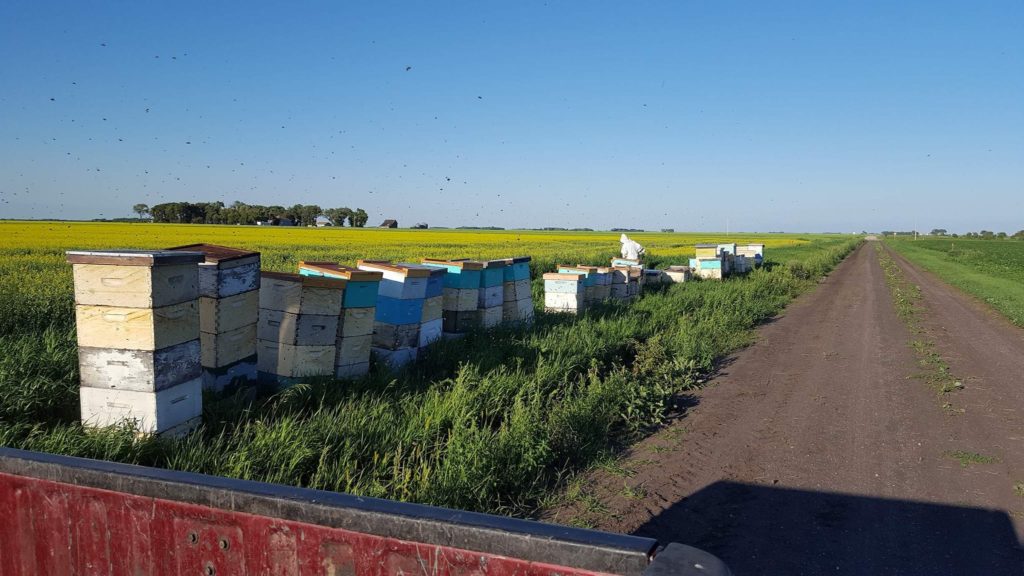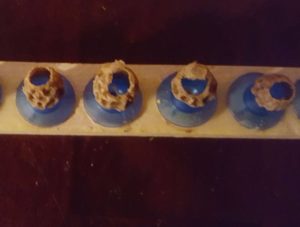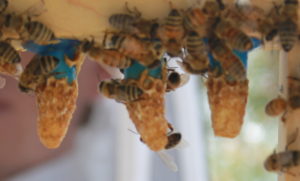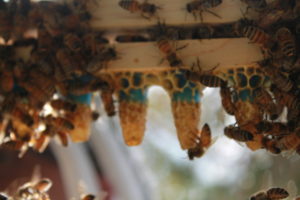A little later than I thought I would be getting around to posting this but here it is.
After my last post, many folks have been asking about how I set up and manage my double nucs, for production. I will try to explain it below as clearly as possible, with photo illustrations. One thing to note, keeping multiple colonies in a single hive setup is not an original idea, I have borrowed much of what I do from the techniques of other successful beekeepers, modified to fit to my location, and management strategy. This strategy has been very successful for us, 5 years ago we bought our first 5 hives, we have never purchased another colony of bees since and I believe we are running in the neighborhood of 100 colonies this season! It works and you should try it!
It was raining out so I went into the equipment shed to take photos of the setup, there are no bees in the equipment, but not necessary for our purpose here.
Many were interested in how I set up my bottom boards. As I am using queen cells in these nucs and mating queens, I have set up my bottom boards to have opposing entrances. Having opposing entrances helps keep mating queens from entering the incorrect nuc after flights, it also reduces drift within the double nuc keeping both colonies exiting their own entrance (for the most part) and supporting their own queen.
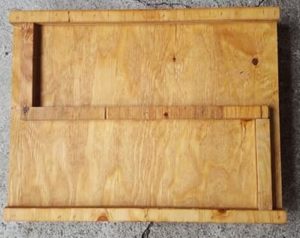
Double nuc bottom board with opposing entrances
The bottom board is made of plywood with 2×2 runners underneath to keep it up off the soil, and also easy to pick up.
The double nuc box itself is a regular deep super, without handles on the front or back. A 1/4″ divider is placed into the hive by cutting a 1/4″ wide by 3/8″ deep dado cut, down the center of your front and back panels on the super prior to assembly. Why 3/8″ deep? The frame rests on the front and back of the super are 3/8″ deep, in order to ensure there are no gaps for the queens to get through to the opposite chamber, you want to make sure your divider butts up against the back of the frame rest rather than the inside of the super.
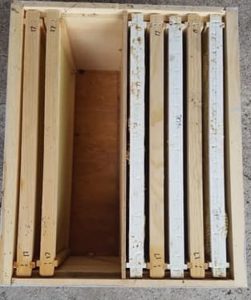
The double nuc super is a regular super without handles on the front or back and a 1/4″ divider down the center
It is very important that the divider is a perfect fit, any gaps, top or bottom or by the frame rests with allow the queens to cross over and render the boxes useless for the double nuc setup.
Through trial and error I have learned that 1/4″ is the best width for the divider, I tried 3/8″ and the frames just sat too tight in the boxes, that extra 1/8″ makes a big difference! I have also noticed that the bees build far less propolis on the frame sidebars of plastic frames. I try to have 3 out of 5 frames in each double nuc side plastic to allow room when pulling frames for inspection, a rolled queen means alot of work wasted.
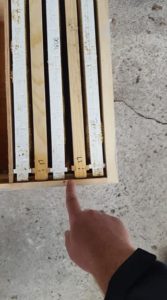
using plastic frames allows room for frame movement when bees propolize the frames together
My splits are made up with 2 frames of bees and brood and a frame of pollen and honey for each side of the double nuc box, one can either add a queen cell or a mated queen. With a mated queen I have made up splits with only one frame of brood quite successfully.

Nucs are made up, 2 frames of brood and 1 frame of pollen and honey
You will then close up the hive with 2 separate inner covers, one for each side, I make these simple as they are only on the hive for a few weeks a year. a piece of 5/8″ plywood with a 2″ pail feeder plug. You will want to keep the populations of the 2 hives separated until the queens on both sides have established their nests and filled their side with pheromones. Having these 2 covers allows you to open one side without worry of a queen crossing over from the other while you work.
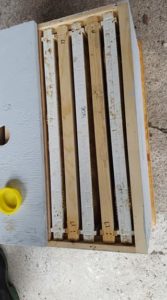
Having separate inner covers allows you to work in one side without disturbing the other.
Once the flow begins you will pull off the inner covers and insert a queen excluder to keep the queens separated, but allow the hive populations to mingle and work together to store honey above the 2 brood nests. Metal Queen excluders must be placed upside down with the bars runneing parallel to the divider and touching the entire length, otherwise the queen can squeeze under it (I give them a slight bend in the middle to be sure). In my opinion plastic queen excluders are garbage, they warp and don’t lay flat, stay away from these if you want to run 2 colonies in a single box.

Queen excluders are set upside-down to prevent the queens from crossing over the middle divider
You can then run them like a single deep production hive for the rest of the season.
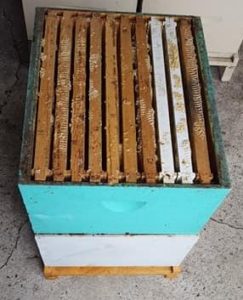
Honey supers are placed above the 2 colonies to be filled
In fall when feeding begins, leave the excluder on the hive and use a regular migratory top or inner cover to feed both colonies with a pail feeder. To winter them in a single you will need them to completely back-fill the brood nest, we feed 5-6 gallons of 2:1 syup in the fall to each double nuc, this is plenty to get them through 5-6 months of winter in the bee shed.
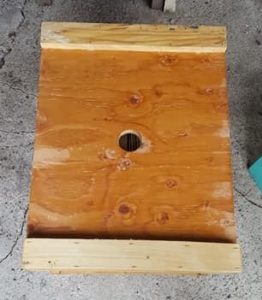
Both colonies are fed in fall with a single hive top pail feeder
If you found this post useful or interesting feel free to let me know and share it with your beekeeping friends on social media!


